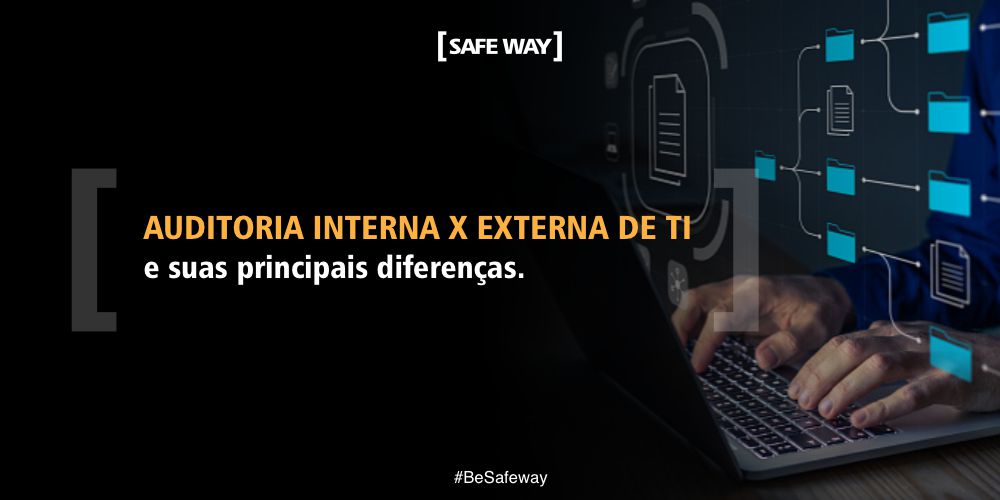São Paulo/SP – November 25, 2022. The main objectives of internal and external audits are to identify possible risks in processes and ensure that their management is contemplating the best market practices according to the reality of each organization, being one of the best ways to monitor its maturity.
*By Juliana Nunes
The origin of the audit comes from the need to prove the financial data of an organization. With the increased use of technology in several areas, including finance, the practice of auditing information technology controls has been growing and, in most companies, becoming mandatory.
The main objectives of internal and external audits are to identify possible risks in the processes and ensure that their management is contemplating the best market practices according to the reality of each organization, being one of the best ways to monitor its maturity. However, although internal and external audits are complementary, their purposes are different.
INTERNAL
In internal audits, processes and environments are evaluated by an auditor from the organization itself or by a service provider. They can be performed with greater flexibility, however it is recommended that they be carried out annually, before the external audit.
The purpose of evaluation in internal audit is to educate both top management and employees about possible improvements that would benefit processes and controls, bringing better maturity and risk prevention to the organization. In addition, it guarantees compliance with procedures, rules and policies established internally. Therefore, the best time to identify gaps and optimization of process management is in internal audit, where you have a broad and clear view of the current state of information security in the organization.
To assess the processes and environments, the auditor conducts interviews with key business areas to understand the processes and business and validates the understanding based on the evidence. It is also possible to evaluate configurations and automated controls through the use of specific tools.
The final report will be reported internally in order to initiate the creation of action plans to address the identified improvements, prior to the start of the external audit.
EXTERNAL
In external audits, processes and environments are evaluated by a professional with no connection to the organization. In addition to being an additional layer of assessment, they are performed to create transparency of the organization's public image.
The objective of the evaluation in the external audit is to generate reliability and credibility to the reports that will be made available to the organization's interested parties such as customers, investors and suppliers. The external auditors are independent and have the responsibility of determining and exposing non-conformities and risks of the organization's controls and processes after a careful evaluation.
The assessment of processes and environments works in the same way as the internal audit, through interviews and evidence, the audit conclusions are documented in the final report that will be reported to both internal and external stakeholders and action plans must be created for dealing with the failures and improvements found.
FINAL CONSIDERATIONS
By carrying out periodic audits in the information technology environment, it is possible to maintain a process of continuous improvement in the organization, critically analyzing processes and controls, ensuring better maturity in the prevention and treatment of security failures, as well as in the identification of factors that impact the performance level of the IT area and the organization as a whole. In addition, it allows the organization to keep up to date with the best market practices and information security regulations that are constantly evolving.
— Juliana Nunes is GRC and Information Security Senior Consultant | [SAFEWAY]
How can we help?
THE SAFEWAY is an Information Security consulting company recognized by its clients for offering high value-added solutions through projects that fully meet the needs of the business. In 14 years of experience, we have accumulated several successful projects that have earned us credibility and prominence with our clients, who largely make up the 100 largest companies in Brazil.
today through 25 strategic partnerships with global manufacturers and our SOC, SAFEWAY is considered a one stop shopping with the best solutions in technology, processes and people. We have both the technical skills and the experience necessary to assist your company in the process of structuring controls and preparing the environment for the implementation of an ISMS, SGS or SGCN and, consequently, certification of operations, services or companies to the ISO27001, ISO20000 or ISO22301 standards.
In order to support companies in this process of evaluation and adaptation to the requirements of the LGPD, [SAFEWAY] has in its portfolio of services, the Cybersecurity Health Check whose objective is to carry out a diagnosis of the CyberSecurity, Information Security and Data Privacy implemented in your company, contemplating the pillars of Law Suit, People and Technology.
through the Cybersecurity Health Check, risks associated with information security and privacy of internal processes and activities are identified, existing controls and new controls evaluated according to the size of your organization to increase the level of maturity and compliance, in accordance with good information security practices. If you would like more information, contact one of our experts!




